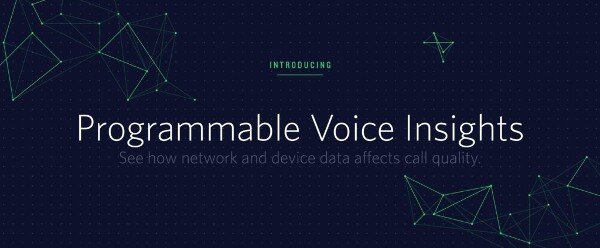Analytics != Operation
Twilio just announced a new service to its growing cadre of services. This time – Voice Insights.

What to expect in the coming days
This week Twilio announced several interesting initiatives:
- Country specific guidelines on using SMS
- A new Voice Insights service
- The Kurento acquisition
Add to that their recent announcement on their new Enterprise offering and the way they seem to be adding more number choices in countries. What we get is too much work to cover a single vendor in this industry.
Twilio is enhancing its services in breadth and depth at the same time, doing so while trying to reach out to new customer types. I will be covering all of these issues soon enough. Some of it here, some on other blogs where I write. Customers with an active subscription for my WebRTC PaaS report will receive a longform written analysis separately covering all these aspects later this month.
What I want to cover in this article
I already wrote about Twilio’s Kurento acquisition. This time, I want to focus on Voice Insights.
All the media outlets I’ve checked to read about Voice Insights were regurgitating the Twilio announcement with little to add. At most, they had callstats.io to refer to. I think a lot is missing from the current conversation. So lets dig in.
What is Voice Insights?
Voice Insights is a set of tools that can be used to understand what’s going on under the rug. When you use a communications API platform – or build your own for that matter – the first thing to notice is that there’s lack of understanding of what’s really happening.
Most dashboards focus on giving you the basics – what sessions you created, how long were they, how much money you owe us. Others add some indication of quality metrics.
The tools under the Voice Insights title at Twilio include:
- Collection of all network stats, so you can check them out in the Twilio console
- Real time triggers on the client, telling you when network issues arise or the volume is too low/high
- Pre-call network test on the client
- User feedback collection (the Skype “how was your call quality” nag)
Some of them were already available in some form or another in the Twilio offering – such as user feedback collection.
The features here can be split into two types:
- Client side – the real time triggers, pre-call network test
- Server side – collection of network stats
Twilio gave a good introduction to all of thee capabilities, so I won’t be repeating them here.
What is interesting, is if and how they have decided to implement the real time triggers – do they get triggered from the backend or directly by running rules on the device. But I digress here.
How is it priced?
Interestingly, Voice Insights is priced separately from the calling service itself.
If you want insights into the voice minutes you use on Twilio, there’s an extra charge associated with it.
Prices start from $0.004 per minute, going down to ~$0.002 per minute for those who can commit to 1 million voice minutes a month. It goes down to a shy above $0.001 a minute.
For comparison, SIP-to-SIP voice calling on Twilio starts at $0.005 per minute, making Voice Insights a rather expensive service.
Comparisons with callstats.io are necessary at this point. If you take a low tier of 10,000 voice minutes a month, callstats.io is priced at 19 EUR (based on their calculator – it can get higher or lower based on “data points”) whereas Twilio Voice Insights stands at 40 USD. How do these two vendors offer lower rates at bulk is an exercise I’ll leave for others to make.
Is this high? low? market price? I have no clue.
TokBox, on the other hand, has their own tool called Inspector and another feature called Pre-Call Test. And it is given for free as part of the service.
Where is it headed?
Voice Insights can take several directions with Twilio:
- Extend it to support video sessions as well
- Enhance and deepen the analytics capabilities, probably once enought feedback is received from customers on this feature
- Switch from a paid to free offering, again, based on customer feedback
- Unbundle it from Twilio and offer it as a stand-alone service to others – maybe to all the vendors that are using Kurento on premise?
With analytics, the sky usually isn’t the limit. It is just the beginning of the dreams and stories you can build upon a large data set. The problem is how can you take these dreams and make them come true.
Which brings us to the next issue.
The future of Analytics in Comm APIs
There’s a line drawn in the sand here. Between communications and analytics.
Analytics has a perceived value of its own – on top of enabling the interaction itself.
Will this hold water? Will other communication API vendors add such capabilities? Will they be charging extra for them?
I’ve had my share of stories around CEM (Customer Experience Management). Network equipment vendors and those handling video streaming are marketing it to their customers. Analytics on network data. This isn’t much different.
Time will tell if this is something that will become common place and desired, or just a failed attempt. I still don’t have an opinion where this will go.
Up next
Next in my quick series of articles on Twilio comes coverage of their new Enterprise plan, and how Twilio is trying to grow in breadth and depth at the same time.
Can’t decide which CPaaS vendor to use? Check out my CPaaS vendor selection matrix:
